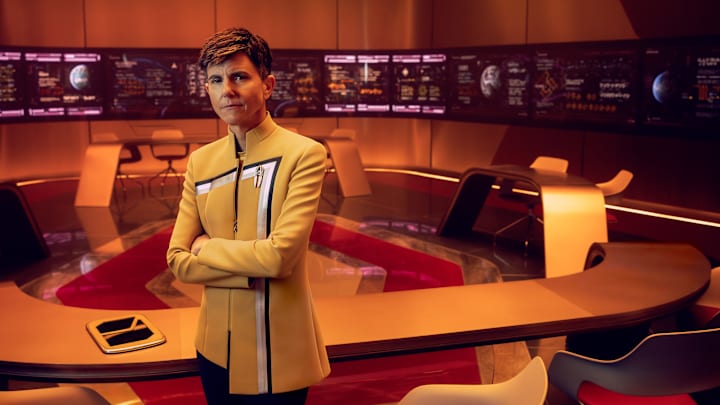Starfleet Academy is set to be the project set furthest into Star Trek's future — if that flash-forward from Discovery's final episode is ignored — and while it'll be cool to see a deeper dive into the 32nd century, I'm worried the show's far future setting comes with some pretty big drawbacks.
With Strange New Worlds' end now in sight, Starfleet Academy could soon become the franchise's flagship show. While other movies and TV shows are rumored to be in the works, none of them have been officially greenlit yet as I write this. So, with iconic Star Trek eras like the 23rd and 24th centuries soon to be unrepresented, Starfleet Academy will need to work extra hard to win fans over.
Star Trek's 32nd century made its on-screen debut thanks to the USS Discovery's jump from the 23rd century to the distant future at the end of Discovery season 2. The 900-year leap allowed the space opera to reinvent itself as the audience got to witness a previously unseen part of the Star Trek timeline. So, Starfleet Academy's 32nd-century setting isn't groundbreaking, and it could also cause problems for the franchise in the years to come.

Star Trek tech can't possibly advance more than in the 32nd century
When Michael Burnham (Sonequa Martin-Green) and the USS Discovery crew arrived in the 32nd century, there was something of an adjustment period to the various technological advancements that had happened in the last 900 years. From personal transporters to detached starship nacelles, it was like everything had been upgraded as much as it could ever possibly be.
It made perfect sense for the Discovery writers to do this. 900 years is an incredibly long time, so technology would certainly have progressed in this way. The problem that arises from this is that it makes additional jumps beyond the 32nd-century borderline impossible. At the very least, it would be very difficult to make those future settings seem any more advanced than the 32nd century.
Part of Star Trek's appeal has always been the futuristic tech that exists within the franchise canon. However, the space opera has always been able to give certain fictional devices subtle upgrades as the timeline has moved on. For instance, the transporters that were so commonly used to beam people down to planets in The Original Series weren't quite so advanced or trusted in Star Trek: Enterprise, which was set before TOS.
Similarly, Strange New Worlds season 3 recently revealed that 23rd-century starships weren't capable of safely sustaining holodeck tech, which was standard issue on many Starfleet vessels by the time of the 24th century's on-screen debut in Star Trek: The Next Generation. These incremental jumps are a good way of showing in-universe advancements, but Discovery's huge leap from the 24th century to the 32nd meant the writers were forced to abandon subtlety in this regard.

Star Trek's 32nd-century plateau isn't necessarily a bad thing
Discovery was made as an intended jumping-on point for new Trekkies, just as TNG was made to welcome in fresh fans after TOS. So, it would have made sense if Starfleet Academy, Discovery's successor, had also jumped forward by a century or two. That said, it didn't, and it decided to double down on telling the story of Starfleet in the 32nd century. This shows a willingness to flesh out the era and make it more fulfilling.
The 24th century is probably still Star Trek's most beloved era, and a huge reason for this is the amount of shows set within that period. The Next Generation, Deep Space Nine, Voyager, and even Lower Decks, all helped to improve the worldbuilding of the 24th century. It looks like Starfleet Academy is trying to do something similar for the 32nd, potentially making it an especially worthwhile endeavor.
Furthermore, there are still centuries of untapped storytelling potential in the period between the 24th and 32nd centuries. Just because Starfleet Academy is favoring the era introduced by Discovery doesn't necessarily mean the franchise won't eventually move on to projects set within that gargantuan gap. If so, maybe we'll still get to see those subtle signs of progress that led to Star Trek's 32nd-century hyper-futuristic advancements.
